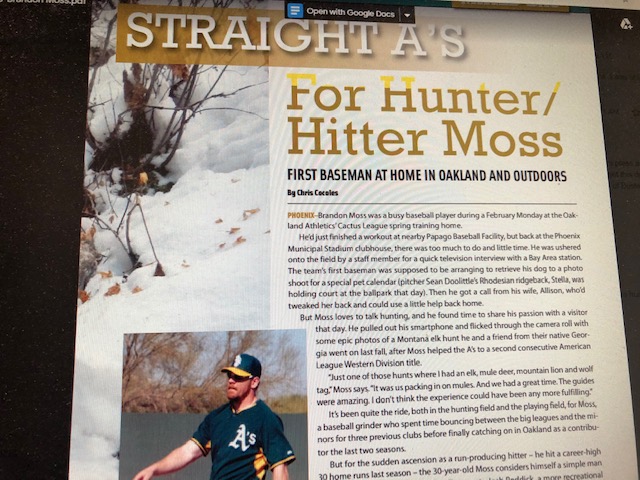A Decade Of Characters In CS
One decade is ending, another is about to begin. 2020 is just about to be upon us, so here’s a look at some of our favorite folks who we profiled throughout the 2010s (at least from 2014 on, your editor’s first full year on the job at California Sportsman):
Brandon Moss, Major-League Baseball player, then with the Oakland A’s (April 2014)
Moss hails from Loganville, Ga., about 40 miles east of Atlanta. Getting outside is a way of life in these parts, and Moss was no different. Some of the less experienced fellow players he’s taken on hunts aren’t comfortable in the woods on their own. Not this guy.
“I grew up being allowed to play in the woods from the time I was a child with a BB gun,” says Moss, whose grandfather, Doug Moss, lived on a farm with plenty of open spaces to explore.
Brandon was hunting with a bow by the time he turned 12. He also discovered a love for duck hunting, which continues today.
“I was hunting with my granddad so often, I can’t remember not going out with him,” he says. “We didn’t always shoot anything. Heck, sometimes we’d just sit near the car and look for deer with a gun. The outdoors was where I can find myself.”

San Francisco Giants catcher Buster Posey (July 2014)
Last fall Posey managed to join his father and fishing guide Jordan Todd of Port St. Joe, Fla.-based Saltwater Obsessions (850-227-6550; saltwaterobsessions.com) for a redfish expedition in the Gulf of Mexico off Florida’s pandhandle.
“Fishing with Buster was like fishing with your best friend you’ve known for years. He’s extremely laid back and comfortable to be around,” Todd says. “Well-mannered, and just a good ole country boy who is at home being outside and enjoys spending time doing the things he loves with his family and friends.”
From April to October, he loves winning baseball games, and the Giants have done that ever since he made his debut in 201. In 2013, he signed a nine-year, $167 million contract.
He’d like to get in some of California’s deer, upland bird and waterfowl hunting during the season. But catchers, probably more than other position players or pitchers, cherish their rest in a rare day away from the ballpark.
There’s always Leesburg in the fall, and Posey remains the rural south Georgia deer hunter who just happens to be one of the best in his profession.
“It’s just fun to be outside,” he says. “There’s a challenge to it and an art to it. You can’t appreciate it unless you go out and do it.”
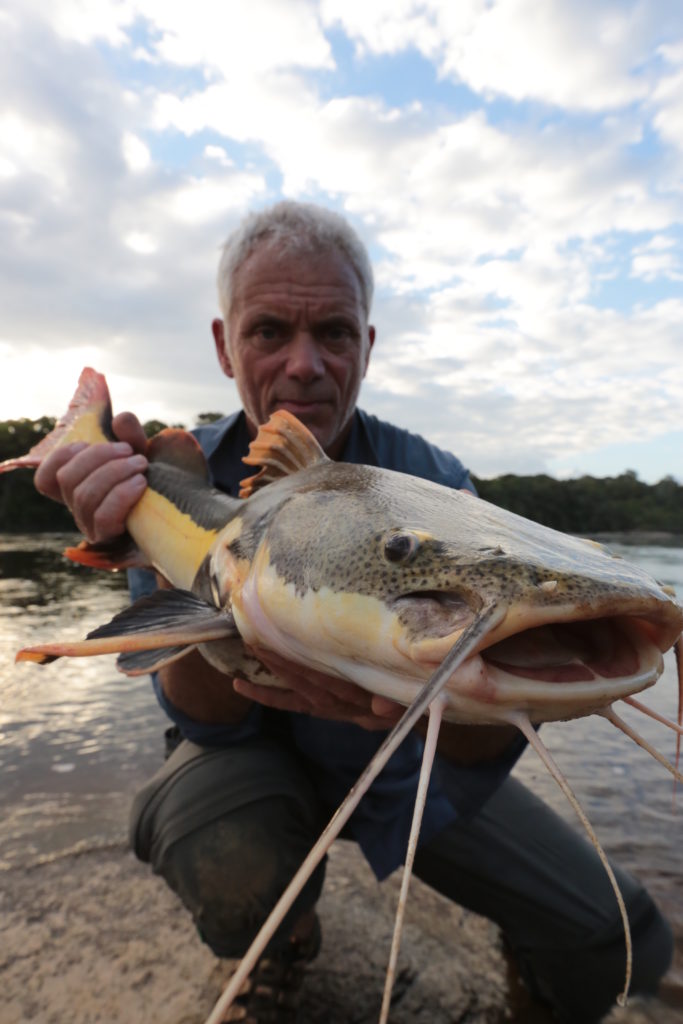
Jeremy Wade, fishing “detective” and host of popular Animal Planet series River Monsters (May 2015)
Wade fishes for exotic, super-sized and sometimes downright mean species all over the world. He’ll spend most of this sixth season that premiered in April in the 4,000-mile-long South American waterway and its seemingly endless system of tributaries. But Wade’s trip to Norway in search of Greenland sharks in Season 5 might have trumped even his countless visits to the mighty Amazon.
“That was unlike anything I’ve ever done before; we were fishing over a ¼-mile (deep) of water. At times we had four lines out, and it was amazing that we did it without tangling them, which could have been a huge challenge,” he says, recalling even when landing (and releasing, as he usually does with all the fish he brings in) a giant Greenland shark, his lines were so far deep, the rod tip barely moved upon the strike. “And hooking something that far down, your first thought is what’s it going to be?”
And that, ladies and gentlemen, is the heart and soul of River Monsters. Wade is first and foremost a storyteller. His episodes feature rods and reels with baited line, not unlike the plethora of sportsman’s shows that fill airtime. But this show is also a history class, an anthropology seminar, a study in people and cultures.

Randy Houston, founder of Purple Heart Anglers, a nonprofit that gets disabled veterans out for fishing and hunting trips (November 2014)
In those early years, Houston rarely went on the boat or into the field with the veterans and the volunteer fishing or hunting guides located around Northern or Central California who took them out. He wants to be in the background, and even now he’ll many times stay behind and help preparing the usual meal lakeside or near the hunting land when the groups return.
“My wife would ask me, ‘Why aren’t you going?’ And I would say, ‘It’s not for me. It’s for the guys.’ If I take a space on the boat and I’m not taking a space of someone else who can go, then maybe I’ll go. It seems funny for me to me on the boat when there’s a veteran somewhere who could be there,” Houston says. “I’ll wave at the dock when they leave and welcome them back when they get home.”
And though it’s obvious this is cathartic for those who went through such tragic circumstances that left them wounded in action, Purple Heart Anglers tries to stay away from trying to reinvent the wheel and play psychologists.
“I’m not there to fix anybody; I don’t know how. The only thing we do is create a space where the veterans and the people they’ve served and protected can get together,” Houston says. “We can say thank you that way.”
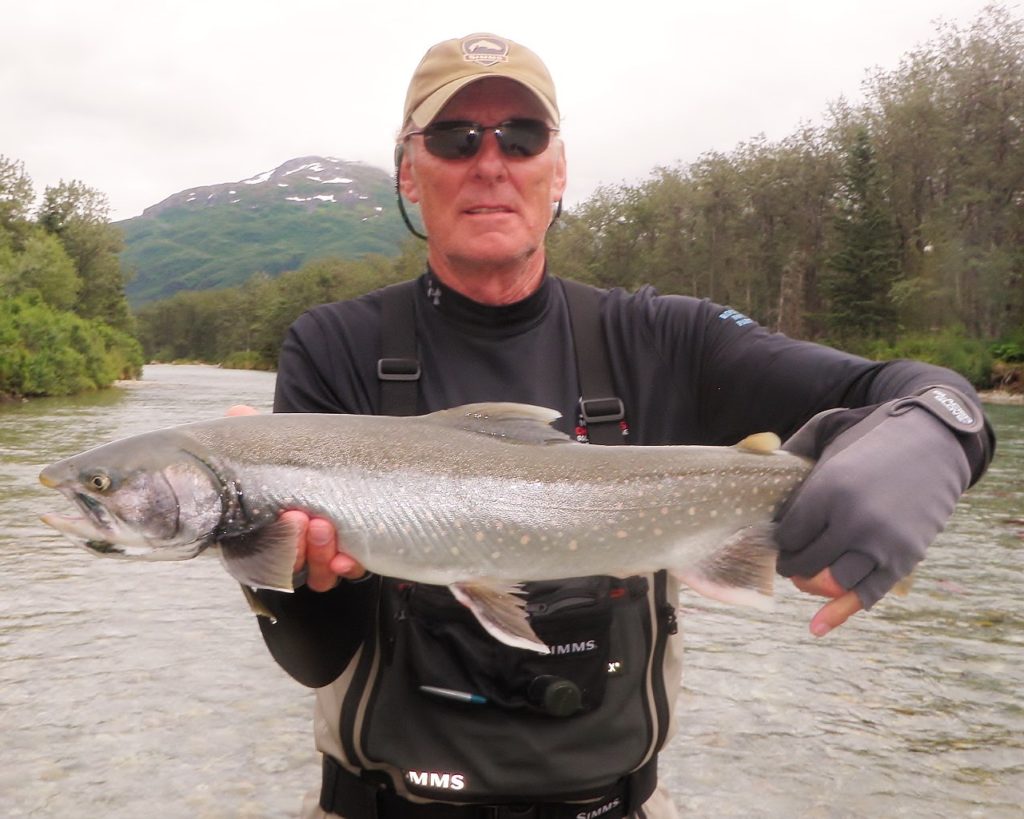
Rick Barry, Basketball Hall of Famer and avid fisherman (December 2015)
“For me it doesn’t matter if it’s 4 inches long or 40 inches long. It’s all about the strike and setting the hook. That’s why I can’t understand why some people get so enamored by going out trolling with the rods in the holder,” Barry says. “All of a sudden, they hand you the rod. That’s not fishing – that’s reeling. Even in the times when I do go out and saltwater fish, I want to hold the rod.”
And he’s done so through hours upon hours of casts during annual trips to Alaska (his bike wreck prevented going up in 2014). Barry loves to share stories of an endless cycle of casts, bites, and catch-and-release action.
A couple years ago, Barry was at his beloved Rainbow River Lodge on a solo trip with a group he wasn’t familiar with. Every day he’d go out and was asked upon the return how he did. He’d caught “about 100” on the first day.
“The guy said, ‘That’s unbelievable.’ So I go out the next day and the same guys ask, ‘How did it go?’ ‘Another great day. About 100 or more fish.’ So I go out on the third day and come back and tell them about another 100 and something fish. They said, ‘That’s insane.’ By the fourth day when they asked again I said, ‘You really don’t want to know.’ ‘Come on, tell us what you did.’ I said, ‘Two hundred and twenty-four fish.’”
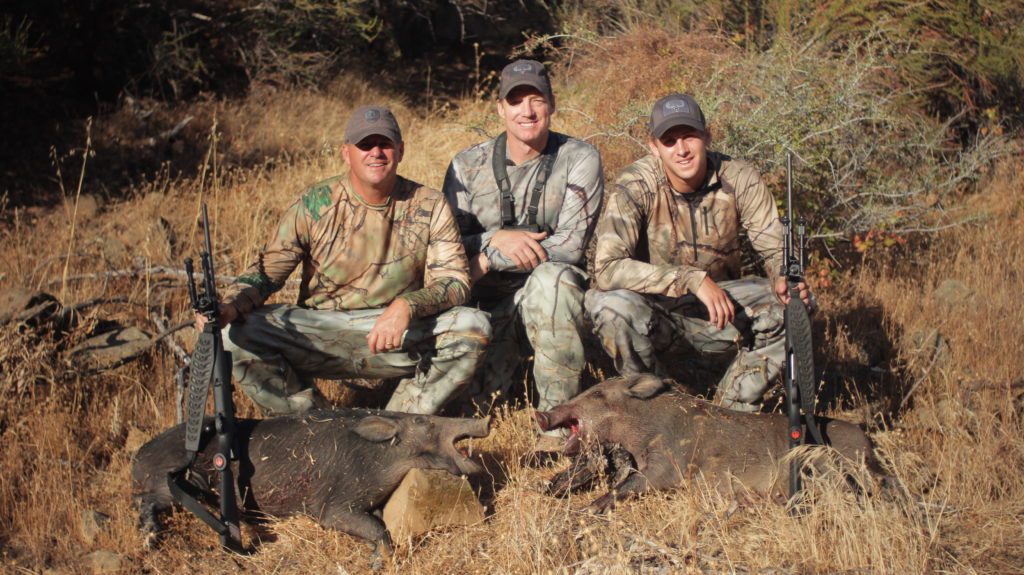
Jared Goff, Los Angeles Rams quarterback (April 2016)
His hunt was the moment of truth for one Jared Goff, especially after his dad put down a pig with a clean shot. Then it was up to the quarterback to connect.
“I felt pretty confident because I’ve shot guns before and I did pretty well when we were practicing before,” Jared recalls.
“Take one, Jared,” Pawlawski told him, but his first shot missed and several pigs scattered into the hilly brush – an incomplete pass if you will.
“It was crazy,” Jared says. “It was early in the morning and it was just starting to get hot before they were to go bed down. We had tracked them down the hill.”
A quarterback knows that the difference between elation and dejection on a football field can be the tiniest of adjustments. “Now or never,” he said on-air, so he sensed this was his time to score another six points.
“Being able to know that I did a good job was similar to throwing a touchdown pass,” he says. The first successful harvest of Jared Goff’s hunting career means he only needs 95 more to match his career touchdown throws.
The high taking that first pig earned a fist bump from Jerry. “I hope he was proud of me and pretty happy about it,” Jared says with a laugh.
When the Bears reported for fall camp, they were in for a tasty surprise.
“We donated (the meat) to a barbecue that they had for the team,” Pawlawski adds. “(Coach Dykes) said to the guys, “the quarterback got the pig.”
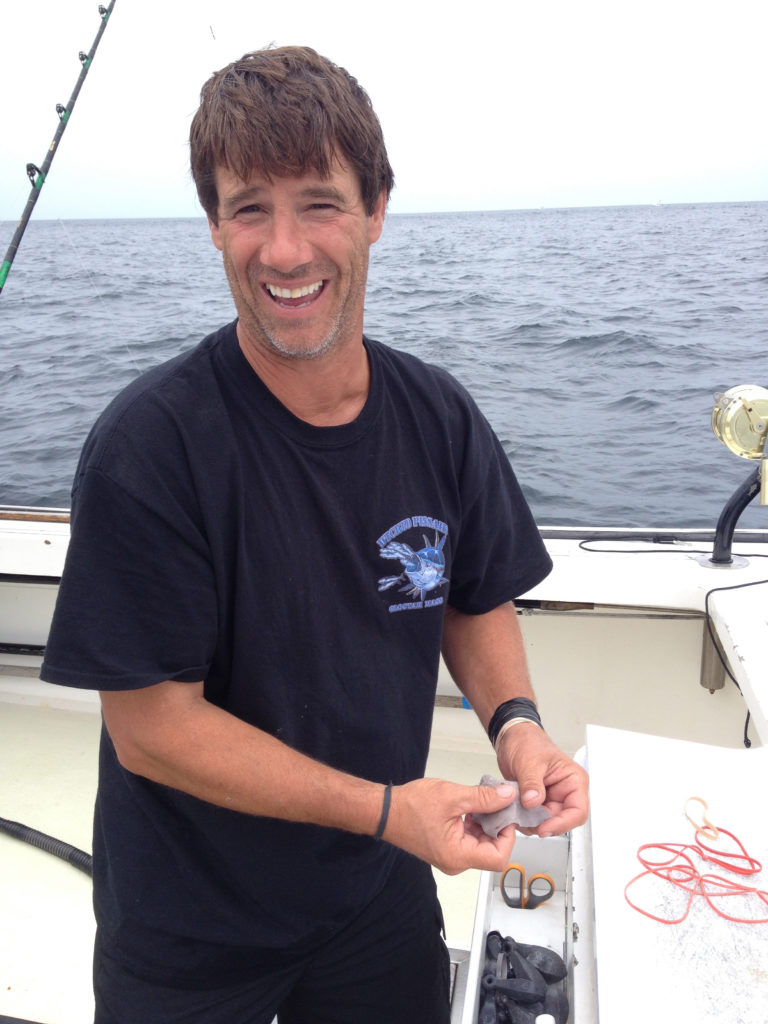
Capt. Paul Hebert, tuna fisherman featured on National Geographic Channel’s Wicked Tuna (May 2016)
And it’s not simply the kind of fishing where wetting your line means tuna will be pushing each other out of the way to bite your bait.
“I know people who have been going for five years and never ever caught one,” Hebert says. “I know ones who have lost their house and their families – everything they own.”
“Doing it for a living, that’s why all the guys have to live out there. We never used to live out on the water. We went out every day but we never went out there for a week at a time. You have to now because everything is so expensive.”
“If you don’t catch a lot of tuna, you’re not going to get by in the winter; that’s why we’re so competitive with each other. We fight, we lie to each other because we know what’s coming: a long-ass winter,” Hebert adds with a laugh.
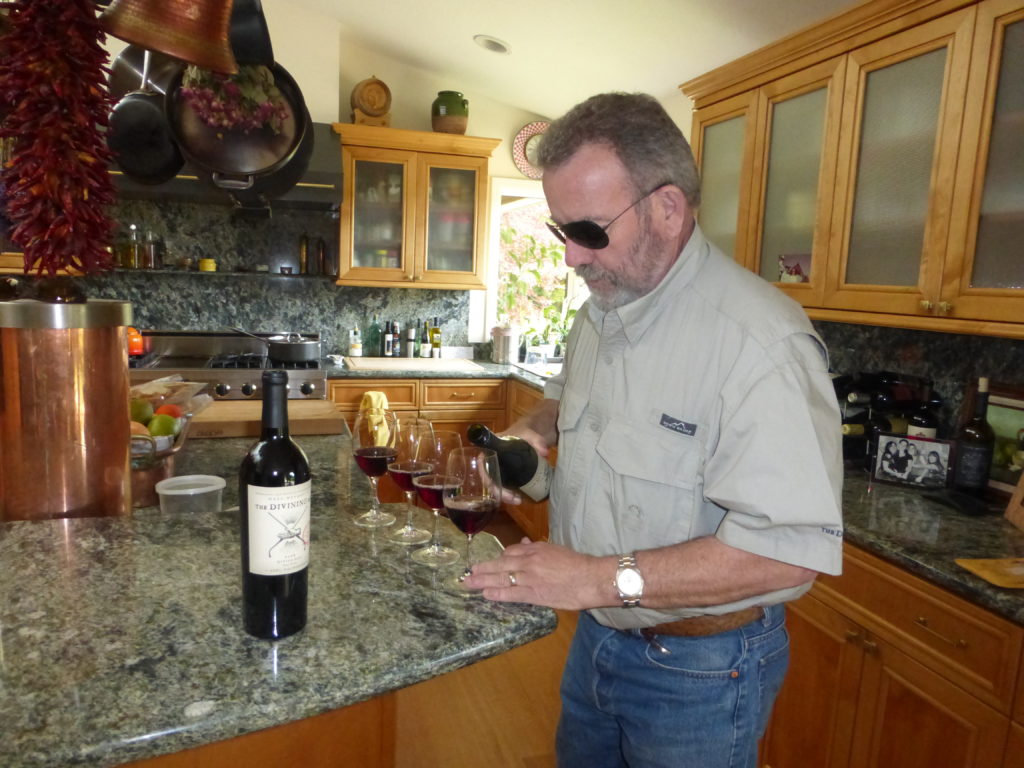
Marc Mondavi, Napa Valley vintner and avid sportsman (July 2016)
“I’m blessed. We grew up in a tight-knit family and we’ve brought our girls up that way,” says Marc, who is also proud he was able to get his kids involved in the outdoors as well.
When Janice was eight months pregnant with Angelina, she caught a 57-pound king salmon on Alaska’s Kenai Peninsula (Marc says he’s caught four 60-plus-pound Chinook on his trips there). Janice and her friends also take an annual women-only fly fishing and wine tasting getaway.
The family also heads north together to a rickety, “funky” three-bedroom cabin near Mount Lassen – “When I say funky, there isn’t a level floor in it,” Mondavi quips – with five small streams filled with native trout a short distance away.
So yeah, life is good, and even towards the end Peter Mondavi enjoyed his time on the water after literally enjoying the fruits of his labor growing grapes and transforming them into one of the valley’s premier wine labels.
“He was fly fishing in Idaho when he turned 100,” Marc says. “He was fanatical. We’d be fixing breakfast and he’d say, ‘Come on! We have to go; the fish are biting.’ It’s 6 in the morning and we’d say, ‘Dad, just chill out; it’s a little too cool.’ But you know what? He’d fish (and keep fishing) and literally we’d have to say, ‘Dad, we’re going in. It’s 5:30, 6 and we need to fix dinner.’ He’d say, ‘Really? We have to go now?’ He was a diehard.”
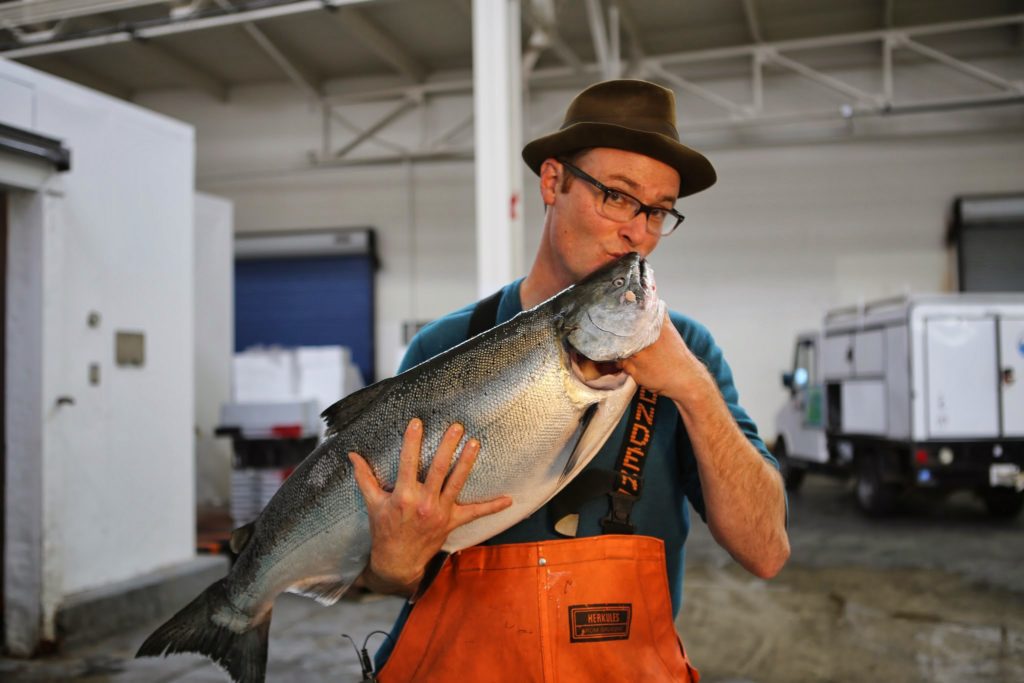
Kirk Lombard, author and Bay Area seafood entrepreneur (October 2016)
Lombard’s obsession with all things fish was born in his native New York – he could walk out of his house and cast a line into the Hudson River in minutes. He eventually found his career calling after he moved to the Bay Area, where he first worked for the Pacific States Marine Fisheries Commission and ultimately opened a sustainable seafood business, the Sea Forager (seaforager.com) with his wife, Camilla, and their children.
Lombard’s appreciation for the bounty of edible critters that congregate in the saltwater muck of San Francisco Bay and along the Pacific shoreline also inspired him over the years to host tours that educates visitors about these natural resources.
“If I have any detractors out there, what they would say is that I’ve given away all the secrets,” Lombard says. “And they’re wrong. Those are people who haven’t done my tours. Because my tours talk about the resources, the history of the bay, and I talk about what you should harvest and what you shouldn’t be harvesting and how your harvesting might impact populations.”
And as educational as it gets, spend some time with Lombard – either on the phone for an hour or traversing around some coastal tide pools – and you’re going to get plenty of dry humor and entertainment.
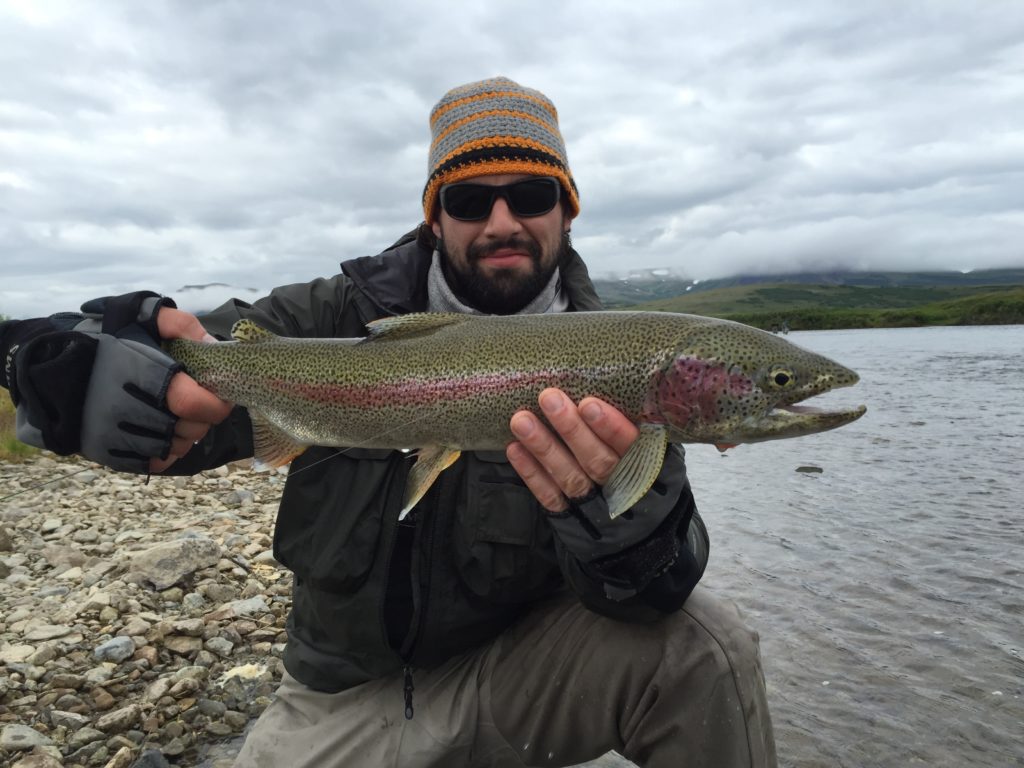
NHL player and outdoors lover Nate Thompson, formerly of the Anaheim Ducks and an Anchorage, Alaska resident (April 2017)
“It really is the Last Frontier,” Nate says. “To be able to drive a half hour out of Anchorage, you can be in the middle of nowhere. Or you can drive to a place in Anchorage, go on a hike and next thing you know, you’re in the wilderness. There’s no place like that.”
Fly fishing became part of the father-son bonding process. They took local classes in how to tie flies and it soon became the Thompsons’ favorite outdoor pastime. Catching a hard-fighting salmon on a fly rod was a challenge Nate couldn’t get enough of.
When he got older, the endless sunlight of Alaskan summers allowed Thompson and his friends to do a “suicide run” to a nearby fishing spot, which is a lot less sinister than it sounds.
“You leave your house at, say, 8 or 8:30 (p.m.), then drive about an hour and 45 minutes to the river,” he says. “You fish and catch your limit and finish – depending on how fast – and whether it’s midnight, 1 or 2 in the morning, you then drive back home. The benefit of that is still mostly light outside. You don’t have to worry about it getting dark on you.”
“That’s one of the perks of being in Alaska in the summertime.”
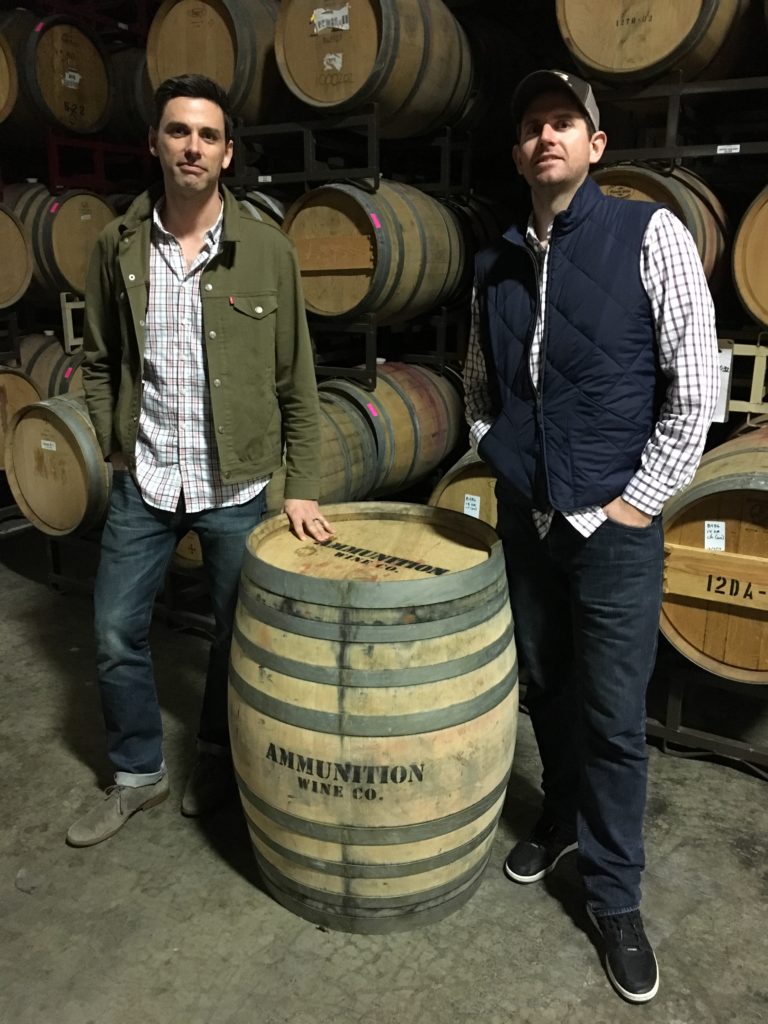
Bill Kerr and Andy Wahl, winemakers whose varietals cater to outdoorsmen and -women (September 2017)
“I happened to be back having dinner with my dad and some friends and we’re sitting around a table. He’s ordering the wine at the table at a steakhouse and looking at the wine list, and I can see that nothing’s kind of resonating with him and sticking,” Kerr says. “And I realized really quickly that, My god, nobody’s making a legitimately premium wine brand with this guy in mind.”
When they began talking seriously about making wine, Wahl, had a history buff, was already pondering telling stories that would be reflected in the product. He first pitched a former U.S. presidents’ theme. Wahl suggested a George Washington-inspired cherry- and cola-flavored cabernet to honor his famed chopping down the cherry tree.
But they also realized their shared love for Mother Nature and the role it had on shaping their childhood.
“ If you’re in Oklahoma or Kansas, why do you buy a (specific) wine? What’s your tiebreaker? Why do you buy wine? Is it 100 percent price? Is it because there’s a story related to it? And I want to tell a story,” says Wahl, who along with Kerr knew before the wine they needed to strike the right chords with the label that would adorn the bottle. “Bill showed me some initial designs that he had for over a year. And I’m thinking that this perfect. We actually took the first wine that we wanted to do and made the concept of what we wanted to do was a picture – just of the label and the design. And we went back to his home state, Nebraska, and said this is what we’re thinking about doing. And the distributor said, ‘This is gold.’”
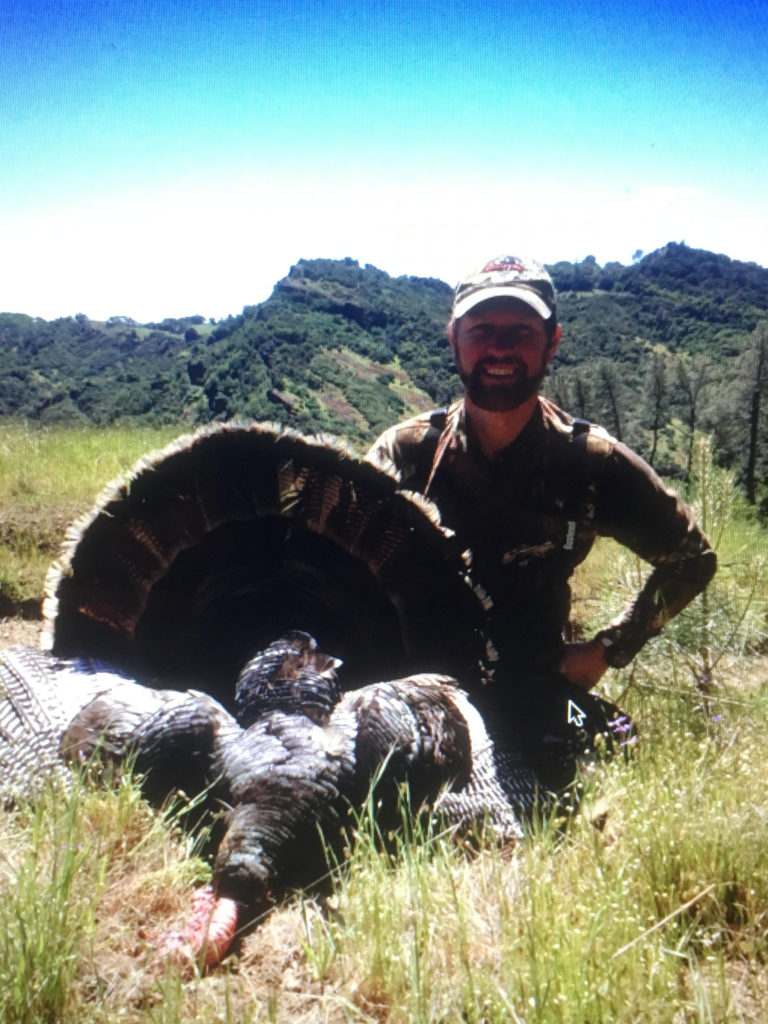
Country music performer Craig Morgan (January 2018)
That lifestyle never left Morgan’s mind as he progressed on into his own path – first during 17 years in the Army and then has his singing career elevated him into a fixture on the Nashville music scene.
“Now I’m in a position in my life where I can afford to go buy what I want to eat, but I choose to hunt because I know the meat that getting is going to be better for me,” he says. “It’s going to be cleaner. We try to use that term a lot in our house: eating clean. But it was very much a part of my life and still is, probably more so today than it was then.”
As his career took off, Morgan’s passion for hunting scored him a gig as host of Craig Morgan: All Access Outdoors, an Outdoor Channel series that chronicles adventures from around the globe.
Among the most memorable episodes was a California turkey hunt with friend and former major-league baseball player Ryan Klesko.
“We donated a hunt with he and I to the (National Wild Turkey Federation), and I’ll never forget that the lady who bought the hunt; she was so excited to be out hunting with Ryan and I,” Morgan says. “We all killed turkeys and it was just a phenomenal hunt (near San Francisco). It was awesome because we hunted for a few days and then got to visit all the wineries.”
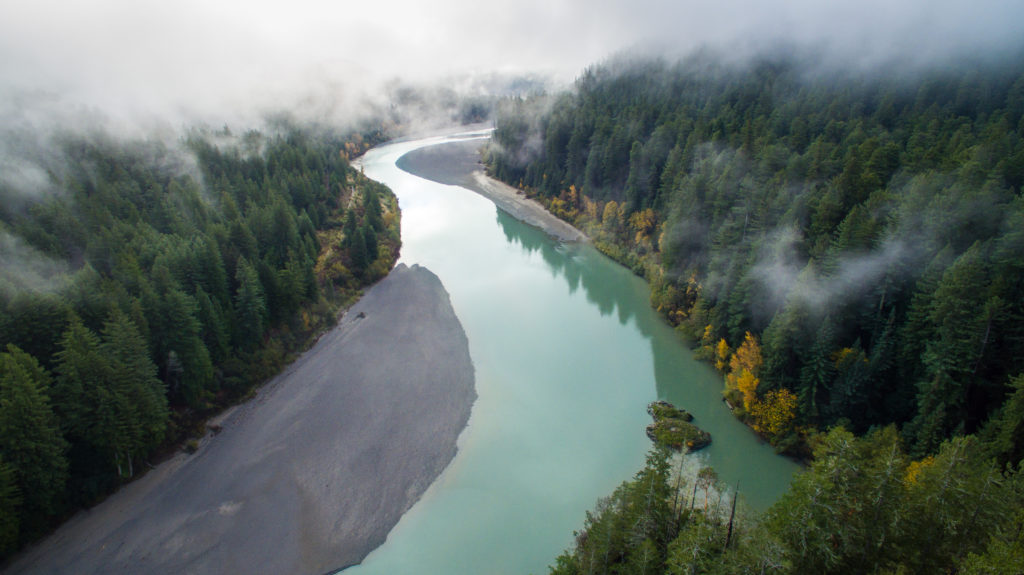
Filmmaker Shane Anderson, who made a documentary about Northern California’s Eel River (September 2018)
The drought took its toll on the Eel just like other rivers throughout California. Yet in 2016 as wetter winters finally began to restore some order in the ecosystem, back came the fish. And in the Eel River, it’s wild salmon and steelhead only, as hatchery fish are no longer released in the watershed. The Eel has become one of the West Coast’s most successful wild salmon and steelhead fisheries.
Anderson hopes his film will continue to share the message that the Eel’s future is bright and not bleak.
“I think a lot of people still have lost hope. A lot of local fishermen don’t even understand that even the good years a few years ago, I don’t think they either remember a much more abundant time or they don’t really have a baseline on how things are on the rest of the West Coast,” he says. “Maybe it’s because it’s close to harvest; I don’t know. We definitely met people along the way who think it’s still dead, and I can assure you that it’s coming back.”

Cory Shiozaki, who directed the documentary The Manzanar Fishing Club, about interned Japanese-Americans in World War II who found peace and hope through trout fishing (April 2019)
Two internees that struck a chord with Shiozaki were Ken Miyamoto, who knew how epic the trout fishing was around this proposed camp he being sent to, so he brought along his tackle like hooks, leaders and sinkers. And Shiozaki also sat in on an interview with Jiro Matsuyama, who took a job with a crew supervising the reservoir adjacent to the Manzanar camp.
“They gave him a vehicle, so he had a lot more accessibility to go in and out of the camps. What he would do is order his equipment from Sears and Roebuck and used to go out fishing and would take his friends out,” Shiozaki says of Matsuyama. “But in the beginning, he didn’t want to get caught so he declined all these offers and pretended to be ignorant. ‘No, I don’t know anything about fishing.’ Later on he was able to assist people leaving the camp and sneaking out toward the reservoir.”
Happy New Year (and decade)!

